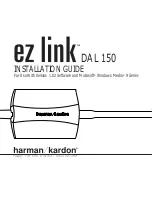
Example 2
This demonstrates how to set the unit in a real-life situation, using the original data from the ‘one-fits-all’
Bosch-distributor 0.231.170.034 for Volkswagen. ( see the picture at the last pages of this manual )
As the original data is VERY often based on distributor speed, and distributor advance, you
have to be aware, that both numbers have to be multiplied by a factor 2, in order to get to speed
crankshaft, and advance crankshaft. If we now look at the 0.231.170.034, we see that the advance starts
at 500 rpm distributor. In the list, you will find this as point no. 2 (1000; 0,0) Then it advances to say 4,5
degrees at 750 rpm, and you will find this in the list as point no. 3 (1500;9,0). After that, the slope gets
less steep, and the advance ends at 10,5 degree at 1750 rpm. after which it remains constant. Hence you
will find point no.4 (3500;21,0) and point no.5 (8000;21,0)
The vacuum-curve is a little more complicated. The horizontal axis indicates the vacuum, but it does that
relative to the atmospheric pressure, and millimeters-Hg. ( this is not a standardized value ; 123ignition
uses the kP ( kiloPascal ) and absolute manifold pressure )
Here is the conversion table :
0 mmHg = 100 kPascal
-100 mmHg = 87 kPascal
-200 mmHg = 73 kPascal
-300 mmHg = 60 kPascal
-400 mmHg = 47 kPascal
-500 mmHg = 33 kPascal
-600 mmHg = 20 kPascal
-700 mmHg = 7 kPascal
Back to the 0.231.170.034 : the vacuum-advance starts at 100 mmHg below atmospheric. In the list you
will find this as point no.3 (87;0,0). It then advances to a maximum of 5,0 degrees at 200 mmHg, which
translates to point no.2 (73;10,0) and point no.1 (0;10,0) !
The MAP-start is set to 1500 rpm : the vacuum-part of the advance thus only comes into play, above
1500 rpm. The RPM-limit is set to 8000 rpm, indicating that no rev.limiting is active.
GB
Summary of Contents for 123-TUNE-4-R-V
Page 1: ......








































